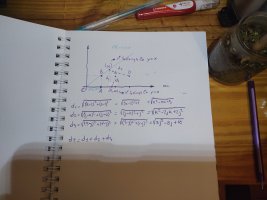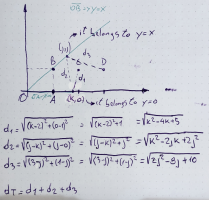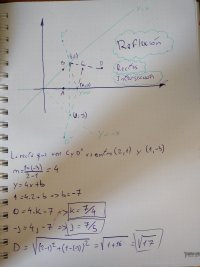Hi all,
I'm stuck with this problem i cannot solve.
Let a point O be the origin of xy-coordinate plane. We define four points A(1, 0), B(1, 1), C(2, 1), D(3, 1) on the plane. Let us start from C, go through a point on line OA, go through a point on OB, and reach D with the mínimum lenght of the path. In this path, the pint on the line OA is [(Answer 1), (Answer 2)], that on the line OB is [(Answer 3), (Answer 4)] and the lenght of the path is [(Answer 5)].
I tried finding the formula of the distance and then derive it to find the minimum, but I get stuck with two variables. Any ideas?
I'm stuck with this problem i cannot solve.
Let a point O be the origin of xy-coordinate plane. We define four points A(1, 0), B(1, 1), C(2, 1), D(3, 1) on the plane. Let us start from C, go through a point on line OA, go through a point on OB, and reach D with the mínimum lenght of the path. In this path, the pint on the line OA is [(Answer 1), (Answer 2)], that on the line OB is [(Answer 3), (Answer 4)] and the lenght of the path is [(Answer 5)].
I tried finding the formula of the distance and then derive it to find the minimum, but I get stuck with two variables. Any ideas?




